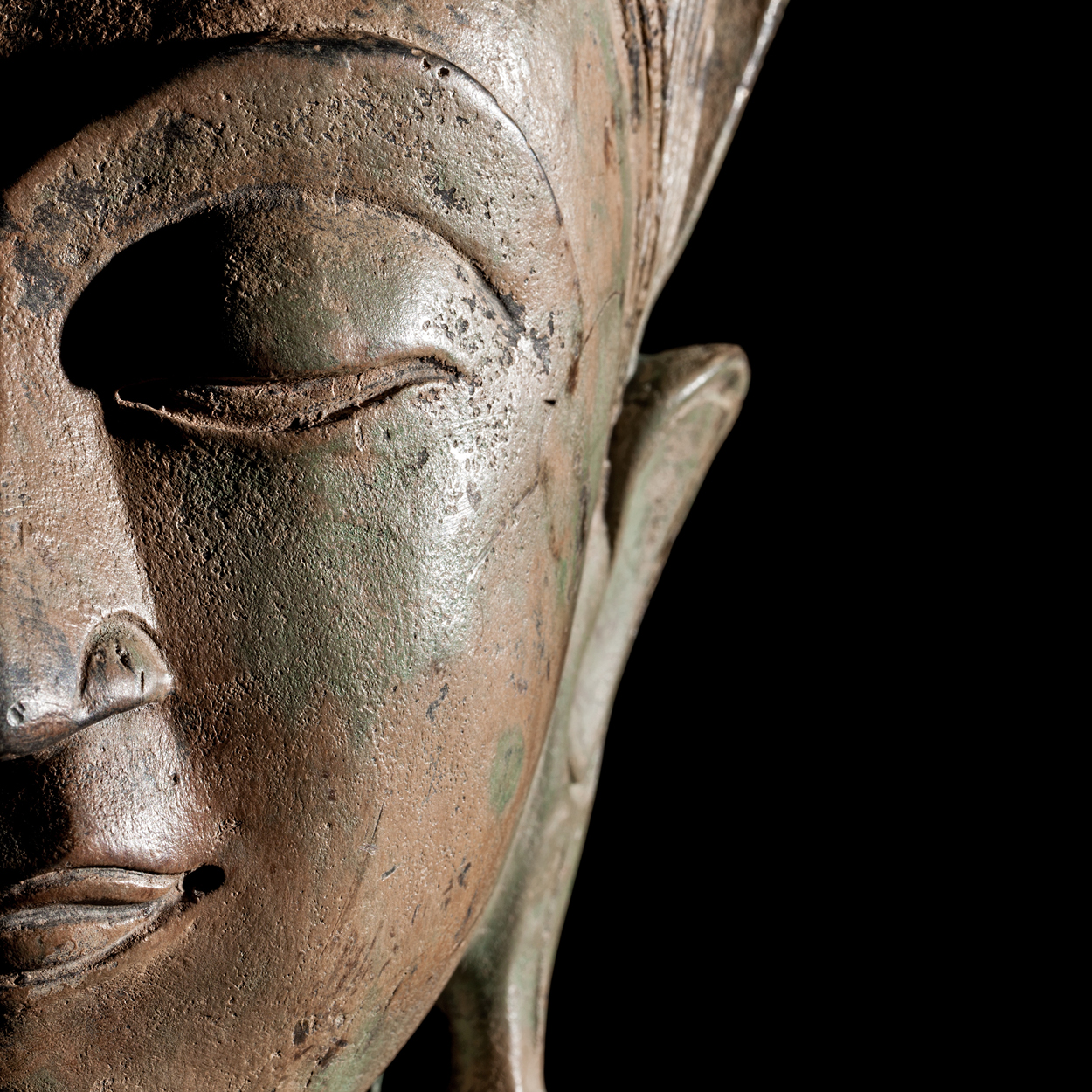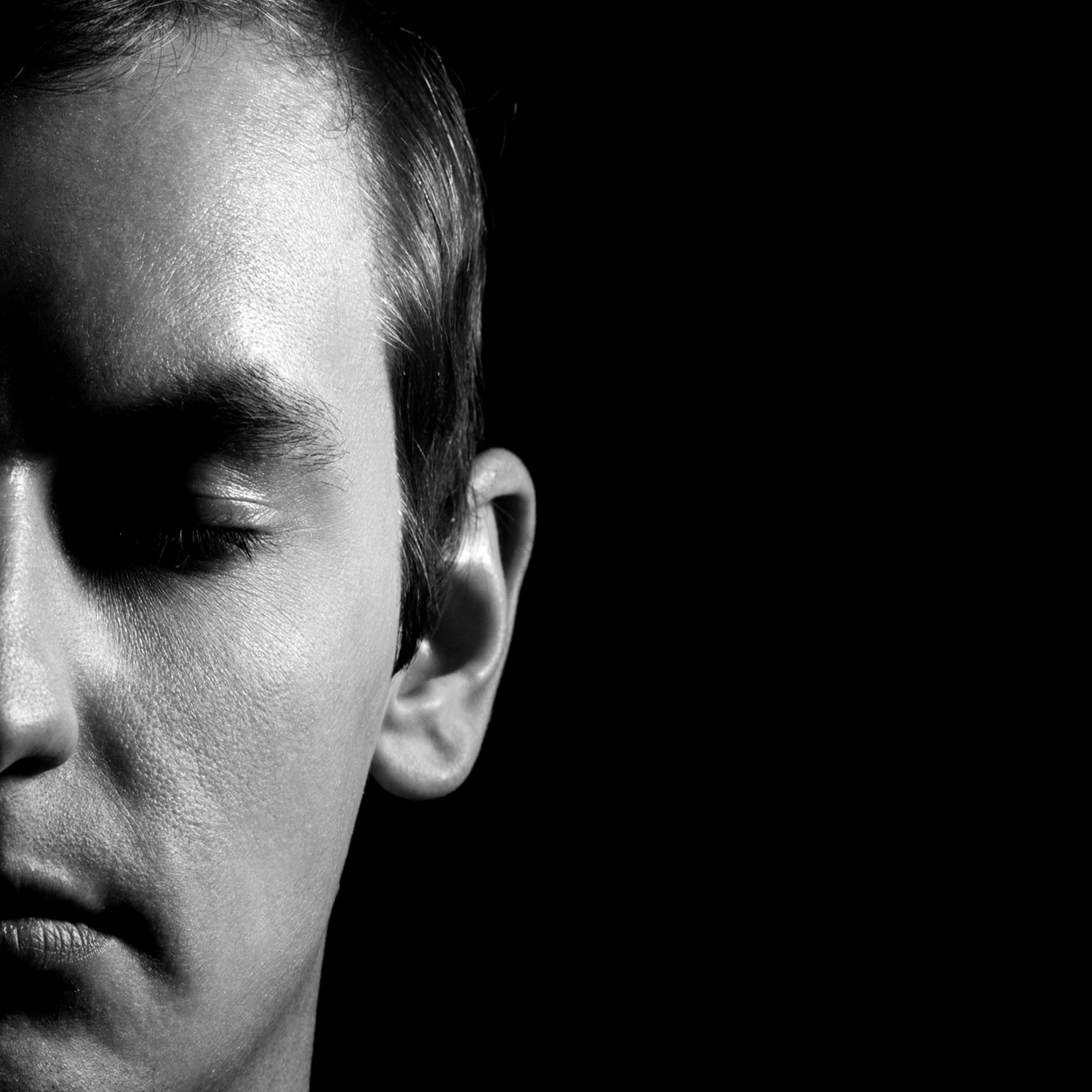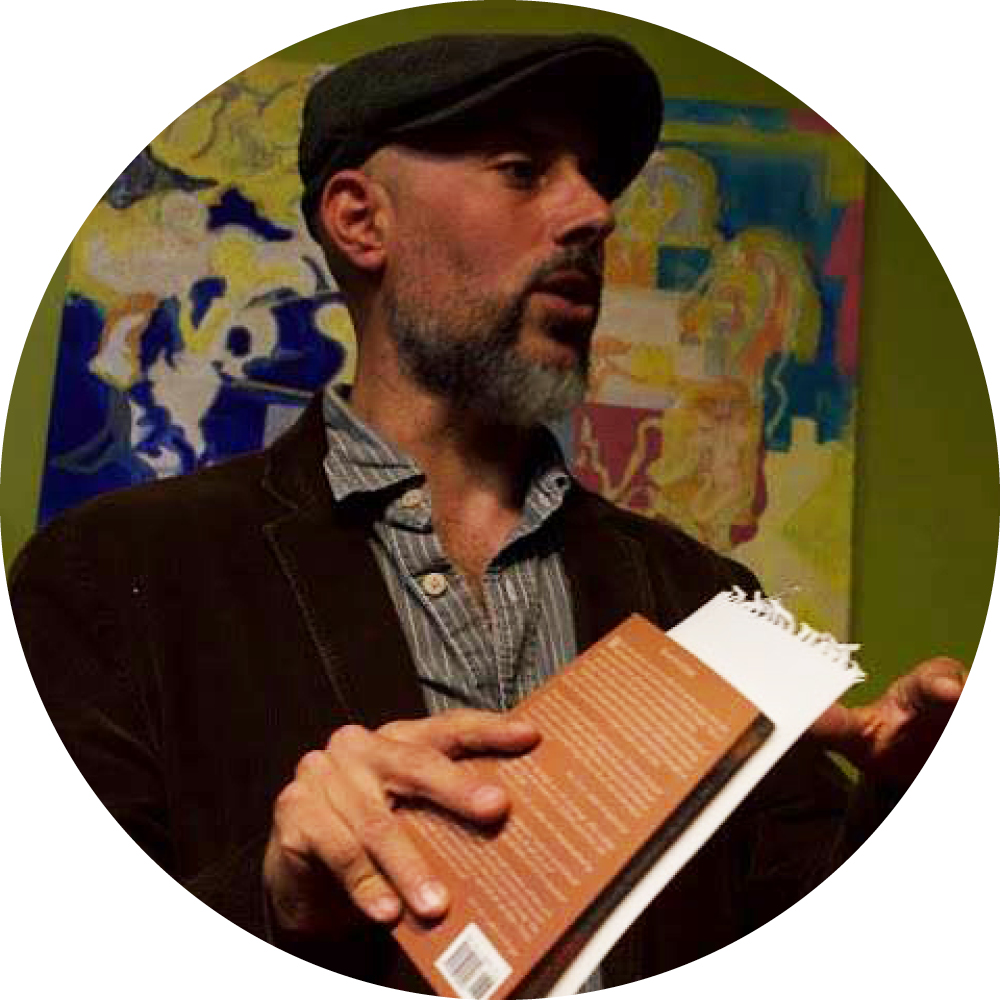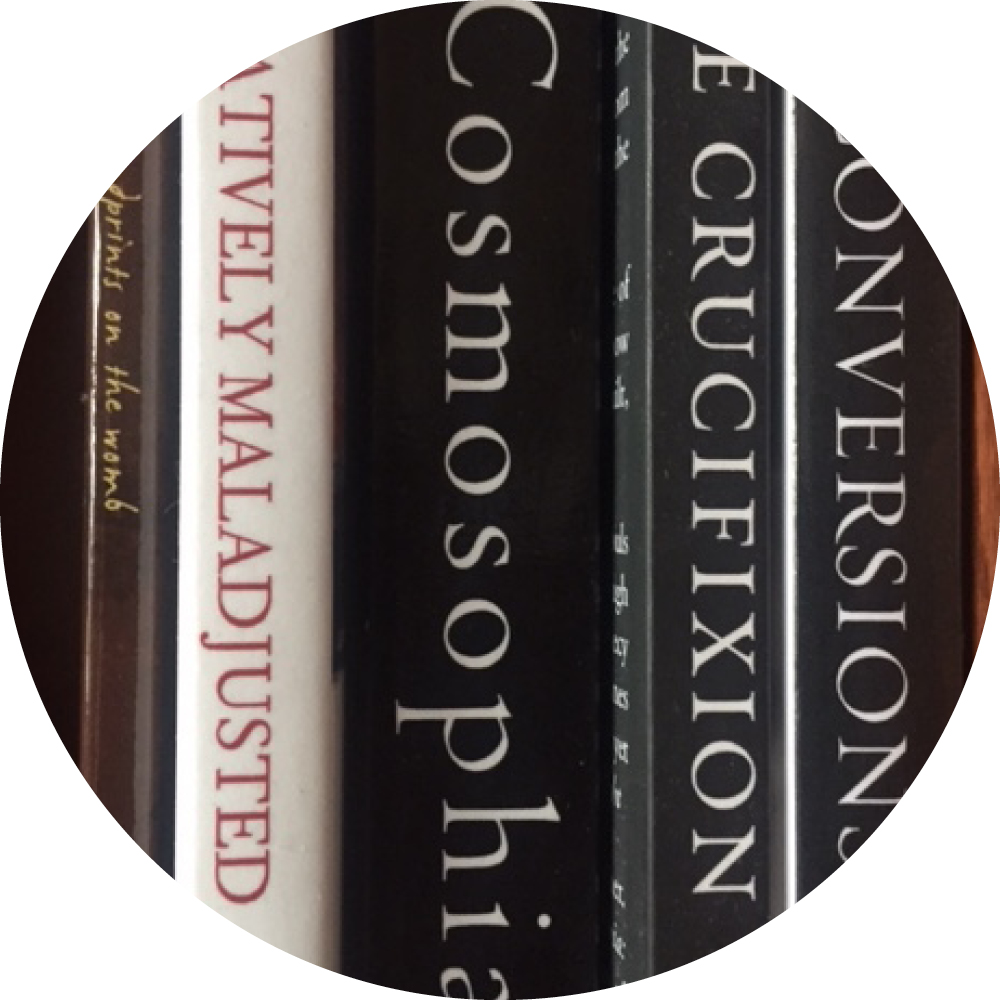Rites of Passage
in Our Times
By Josette Luvmour, PhD and Ba Luvmour
Transition and the Unknown
Rites of passage, those celebrations and rituals that mark milestones in life, have historically been very prominent in cultures. Today, most of us experience only vestiges (e.g., confirmations, Bar Mitzvahs, weddings, graduations, etc.) of these once critical community experiences. Many modern practitioners of rites of passage and some historians agree that this loss is a catastrophe for humanity in its relationships with Nature and with each other (Mahdi, Christopher, & Meade, 1996). In their attempt to reintroduce these celebrations into contemporary life, practitioners and researchers have turned to anthropological studies, to direct contact with traditional cultures, to distillations of transpersonal psychology, and to their own common sense and intuition. Something notable has occurred due to these endeavors and there has been a slow but steady resurgence of interest in these rites. This paper adds to that conversation by defining rites of passage and presenting an understanding of what such rituals may accomplish.
Rites of passage appear to create opportunities for the emergence of self-knowledge. They have historically been used as a means of transitioning individuals or community groups into a new perspective on life, a perspective that is taken to be more mature, or more profound, a perspective that is felt to be necessary for full human development. Many holistic educators, for example, as well as rites-of-passage practitioners, are of the opinion that direct experiential contact with a sense of the sacred is a positive response to mainstream education’s neglect of this aspect of being human. Rather than resist the new growth and change in us, rites of passage have historically offered a way to encourage and mark that change (Mahdi et al., 1996). Usually, the format of rites of passage gathers our closest community together to recognize, be part of, and celebrate that growth.
Self-knowledge
As we humans grow, we need to ripen into new perspectives on life and new ways of being. Friends and trusted loved ones may continue to treat us as though no change has occurred, and often this makes our change more difficult. Philosophers and psychologists have told us for centuries that we depend on the feedback of others to help us define our lives and ourselves. Indeed, most theories of social construction have a common theme that we tell ourselves, or perhaps story ourselves, into being in relationship with others (Morss, 1995). In Growing Critical, the well-known developmental deconstructionist John Morss makes a strong case that humans create the reality they experience through social construction. He hearkens back to L. S. Vygotsky, who had stressed the social origins of thinking and the self (Vygotsky & Cole, 1978). It is in relationship, Morss and Vygotsky posited that we define who we are. Thus, what we are told about ourselves is often what we become.
Although there is much truth in this, important questions remain unanswered. Is it only by social construction that we come to know who or what we are? Many proponents of humanistic and transpersonal psychology, holistic education, and many spiritual traditions claim that there is an inner self or essence that needs to be uncovered, and only the social persona is socially constructed. Rites of passage may well be intended to create opportunities for the emergence of self-knowledge of both a social and inner essence nature. Acknowledgement of the social aspect of self-knowledge in these rites is seen by the participation of family and community.
Built into the structure of most traditional rites of passage is a face-to-face meeting with the unknown. In fact, this is in essence definitional; few rites of passage exist without some event intended to call forth this confrontation (Turner, 1989). For many contemporary Western thinkers, the expanded perspective and growth that are said to come from this confrontation are related to knowledge of the deeper aspects of the self and, from such knowledge, openness to spiritual awareness.
Transpersonal psychology claims that the whole psyche is involved with self-knowledge. In fact, depicting the psyche as knowable by only parts of it is insufficient (i.e., behavior, response to stimulus, social relationships, stages of development, evolution, higher consciousness or pathology) (Walsh, Craik, & Price, 2000). Transpersonal psychology attempts to see the whole of it, which includes all the aspects and manifestations of the human psyche as well as their relationships and synergistic interplay. This is a reflection of a basic tenet of systems theory (Bertalanffy, 1969) and of holism (Smuts, 1926). Using a systems-oriented perspective, all aspects of a person and his or her environmental are a unified whole (Wapner & Demick, 2000, 2005). That is, person and environment are in a complex system of synergistic interplay and change. The principle that the whole is more than the sum of its parts, and the whole can never be known by simply examining any of its parts is a central tenet of a systems approach and of holism (Bohm, 1981).
Confirmation for the transpersonal approach to self-knowledge requiring knowing the whole of the psyche comes from many sources (Csikszentmihalyi, 1993; Langer, 1997). Certainly, humanistic psychology has contributed to the field. In his book Towards a Psychology of Being, Abraham Maslow described concepts such as peak experiences and the human hierarchy of needs as involved in self-knowledge (1968). Maslow introduced the term self-actualization and believed it an essential quality of human nature: “the goal of education… is ultimately the ‘self-actualization’ of a person (1971, pp. 168-169). Educator and psychologist Carl Rogers had a similar perspective. He spoke of the fully functioning human who is “able to select from the multitude of possibilities that behavior which in this moment of time will be most generally and genuinely satisfying…and is soundly and realistically social” (1983, p. 290). Both of these views support the importance of self-knowledge in life. Both these men offer the perspective that self-actualization is an ongoing process and one must stay engaged in the holy curiosity of inquiry, as Albert Einstein put it, in uncovering self-knowledge (Einstein, 1995).
Ken Wilber, a modern spokesman for transpersonal psychology, also insists on the open-ended nature of the human psyche. He weaves Koestler’s notion of holons with Leibniz’s and Huxley’s insights known as the Perennial Philosophy (Wilber, 1977, 1996). In this transpersonal attempt to account for the breadth of the psyche, there is again its open-ended, indefinite nature. This leads to the question of how we, as individuals, can experientially know ourselves as open-ended. Rites of passage may well have the potential for just this.
There are thousands of accounts of rites of passage. Contributions come from the Apache nation of southwest America, the Pacific Northwest Indians Nootka Nation, Buddhist communities of central Tibet, the Dagara people of west Africa, contemporary work by Maurice Gibbons with American high school students, and many, many others (Farrar, 1987; Gibbons, 1990; Mahdi, Foster, & Little, 1987; Some, 1994). A careful reading of these accounts suggests that rites of passage help bring forth meaningful questions, rather than dogmatic answers, and help us see that life, at its core, is a mystery. Yet they prompt us to continue to ask questions rather than just accept unknowableness.
Speaking about the mysterious often means speaking about the unspeakable and this is a delicate matter. Still, there seems to be an imperative to try. For instance, the ancient book of Chinese philosophy, the Tao Te Ching, begins with these two lines: The Tao that can be told is not the eternal Tao. The name that can be named is not the eternal name (Tsu, 1972). In Mystical Languages of Unsaying, Michael Sells described mystery(1) or what is transcendent as beyond name and yet “in order to claim that the transcendent is beyond names, however, I must give it a name; the transcendent” (1994, p. 2). Sells offered the word “mystery as a referential openness onto the depths of a particular tradition, and into conversation with other traditions. Yet as elusive as it is, mystery is in principle accessible to all” (1994, p. 8).
Many great thinkers emphasize that the wholeness of the psyche transcends social construction and requires a sense of awe and wonder that is said to be spiritual (Smith, 1990; Smith, 1976). Many of their ideas are incorporated into the understandings known as the Perennial Philosophy (Huxley, 1945). Huxley’s classic work of that name investigates a commonality of the spiritual core, the thread running through the way of many cultural and religious descriptions.
The Tao that can
be told is not the
eternal Tao.
The name that
can be named
is not the eternal
name.

There are many resemblances between what Perennial Philosophers regard as central to spiritual life and rites of passage. One that I shall return to later is the importance of an experiential relationship to the mystery. Another is the belief that we must engage specific disciplines to awaken self-knowledge. These disciplines include engaging struggle to overcome our ignorance and to know ourselves for who we are. Rites of passage involve disciplines throughout the process, some of which can be quite onerous. Further, the Perennial Philosophy points out that the disciplines chosen must coincide with the proclivities of the individual (Huxley, 1945, pp. 147-148). Here rites of passage seem to insist upon sensitivity to all participants in accordance with family and community. The knowledge of which disciplines provide the best chance for access to the mystery lies in the hands of those who know the child well and can thus choose those that are genuinely meaningful and relevant.
Rites of passage often are so constructed that all participants (the person undergoing the rite as well as the witnesses) explore meaning together without coercive agreement on the nature of the meaning. A serendipitous consequence of this sensitivity is the relationships that are nurtured when significant family and community members of the person undergoing the rite are witnesses or participants.
Many contemporary rites-of-passage practitioners believe that rites of passage done at certain junctures in life, with developmental sensitivity, offer a format for people to stay current with their own growth and the growth of those closest to them. During the rite, the possibility arises of a type of inner silence free of memories and associative thought. As Krishnamurti said, “there is space in silence” (1999, pp. 108-109). During this inner silence, meaning in life often appears that yields a larger perspective than one solely based on behavior or on the construction of social relationships. There are those who claim to have witnessed, in themselves and others, meaning and inspiration move from being an amorphous, foreign concept to becoming gradually integrated and carefully woven into the daily life of people of all ages and backgrounds (Luvmour & Luvmour, 1995).
The Structure of Rites of Passage
It is convenient to have a name by which we can refer to the person undergoing a rite of passage, be it adult or child. I have chosen the name passager.
Across times and cultures there seems to be a very specific structure to rites of passage. Arnold Van Gennep, an anthropologist who made an exhaustive cross-cultural study of such structures, made three broad divisions: separation, margin or threshold, and aggregation (cited in Turner, 1989). Van Gennep outlined each element as follows: (1) Separation from the tribe and a purification ceremony are designed to empty the passager of false beliefs and pernicious conditionings. Separation involves the surrender of identity and the dissolution of concepts carried by thoughts from the past. This often leads the passager into vulnerability and openness. In this naked openness, insights of self-knowledge frequently appear. (2) Threshold (the ordeal) is designed to be the twilight moment as the passager is given the opportunity to step through, crossing from one world into another. It is a moment when the old can be seen as residing in the past and the new has not yet dawned, a moment of limbo between two worlds. (3) Aggregation is coming together. Recognition of the new begins re-entry into the tribe or community with new respect, which entails, of course, new responsibilities (Van Gennep, 1960).
These three structures can be elaborated into six elements in one contemporary approach to rites of passage (Luvmour & Luvmour, 1993). Separation is extended to include both an acknowledgment of the old and its casting off; threshold is the gap; and aggregation is expanded into three ceremonies – the acknowledgment of the new, thanking, and celebration. These subtler distinctions allow the rite of passage to be customized to the needs of the passager and family. The idiosyncratic nature of such customization seems necessary in contemporary Western society as many of the communal identity constructions, shared meanings, and common cultural narratives of more traditional or indigenous societies are absent. Using the six elements, a coordinated series of events can be created to match the individual psyche; at the same time, they intertwine to create an interconnected experience. Following is a further description of each of the six elements.
1
Acknowledgement
of the Old
The acknowledgement of the old involves aspects of self that the passager has outgrown that are named and acknowledged. This is often a humbling process in which the passager accepts things as they are, without excuse or embellishment. Huxley claimed that naming what is old must be done before it can be transcended (1945). With acceptance, resistance can be abandoned and an opening can be made for transformation to occur.
2
Casting off
of the Old
The casting off-ceremony is usually witnessed by loved ones or peers, reinforcing the social aspect of self-knowledge. As Van Gennep pointed out, it is important for the passager to voluntarily destroy the previous status, thus partially tempering them in preparation for what is to come (1960). The casting-off is not magic but a reinforcement of vigilance to rout out what has been named as old if it should arise again. The old is often represented by icons and then destroyed by returning them to the elements of earth, fire, water, or air. Common methods of casting off include making stick figures or representational icons and burying or burning them, writing old character traits or old nick-names on pieces of paper and throwing them into a fire, burning old baby pictures or giving away old toys. With this casting off, the passager’s intent is to be emptied of what needs to end and to be ready for the next step.
3
The
Gap
Historically, the gap ceremony was seen as a powerful experience that demands the passager’s full engagement—physical, psychological, and emotional. It needs to be carefully constructed with, and often demands, rigor in execution. It should call forth a complete attention to the moment, an attention in which there can be tremendous freedom. In this, self-knowledge is really seen as an uncovering by the individual of his or her inner essence. All spiritual traditions speak of the importance of freeing the mind, including being free of the tyranny of memories and the past. As Krishnamurti said, “To free the mind, there must be great intensity; there must be this continual alertness, observation, which itself creates conflict. This alertness itself produces a disturbance, and when there is that crisis, that intensity of conflict, then mind, if it is not escaping, begins to think anew, to think creatively…” (1996, p. 61). Maslow spoke of the now-moment when a person has the potential to lose the past and the future and live only in the now (1971). Suspension of time usually means that something new is continually arising since there is no past to condition our awareness. This is said to open the doorway for change; for knowing oneself beyond construction (Wilber, 1977).
4
Acknowledging
the New
Several steps occur in the acknowledgement of the new segment of a rite of passage, for here is where the passager brings new insight back to the everyday world. First, the passager is given the opportunity to contemplate that which he or she has just learned. Then the passage describes the experience to self, family, friends, and perhaps the community. This is a critical moment in a rite of passage and again, the insights need to be socially acknowledged. The interpretation of the experience is often a large part of what will endure in the passager’s mind. To the extent possible, the meanings of the previous events are considered, and aspects of the Gap that are not understood are encouraged to be left as questions to be investigated later.
5
Celebration
The term celebration comes from words that mean frequented or made famous and indicates both public recognition and rejoicing. This was historically done through festivities or by offering respect. Community and friends are invited to join and celebrate the new person that the passager has become. The invitation is this: We do not want to hold you to the old ways. We respectfully honor you for what you have just experienced and we support your full growth into what you will uncover in yourself over the next period of time. It is recognition by the community for what the passager has been through and is now welcoming into his or her life from this point forward.
6
Thanking
Ceremony
Many have noted that being loved and honored is important, but loving others in return may be even more important for emotional health. Mahdi noted “…that when we receive an important understanding, we can only hold on to it by being willing to give it away” (Mahdi et al., 1996, p. 219). In spiritual traditions, ranging from Native American to Christian to Tibetan Buddhist, giving completes the cycle with an “immense will for the good of all” contributing to the perspective that as one offers to others, one is again emptied and therefore ever open and receptive (Aurobindo, 1976, pp. 146-147). Thanking ceremonies often awaken the understanding that interconnectedness is expressed through offering appreciation for others. As poet William Blake said, Gratitude is heaven itself (Blake, 1972).
Wholeness and Rites of Passage
The entire process of rites of passage offers the passager an opportunity to experience aspects of the self that he or she has not been in touch with before. Each element in a rite can be viewed as a whole unto itself, with all six together comprising a whole process. That is, the inclusion of all aspects of our being—physical, emotional, intellectual, familial, communal, psychological, and spiritual. As noted earlier, the whole is more than the sum of its parts. The old can bring remembrance of who we were, the gap offers the opportunity to experience mystery, and the New is the beginning of sensing who we are becoming. It is no surprise that rites of passage are consistent with the most penetrating and revered insights from the world of spirituality. They can be seen as a pure example of the pattern that connects (Bateson, 1972).
Many practitioners believe that rites of passage offer a sacred opportunity to connect with the whole of our being. Rachel Kessler (2000) spoke of this wholeness eloquently. Using words of her teenage students she says that an education that moves away from a reductionist approach and towards one that honors the whole human being necessarily includes the mystery that lies within us all. She adds that becoming intimately familiar with silence and the sacred is an essential aspect of health in the individual. “A rest for the nervous system, a respite from the demands of others, and a chance to visit one’s own inner life” is a lost but essential aspect of education (p. 38).
In Mihaly Csikszentmihalyi’s articulation of flow theory (Csikszentmihalyi & Csikszentmihalyi, 1988), we find a clear connection between a systems approach, holism, psychology, and rites of passage. Extending the insights of Maslow, Csikszentmihalyi detailed the way in which peak experiences, or the flow, occur. He cited these characteristics of the flow experience: 1) it provides clear goals and immediate feedback; 2) opportunities for acting decisively are relatively high and they are matched by one’s perceived ability to act; 3) action and awareness merge; 4) concentration is on the task at hand; 5) there is a sense of potential control; 6) there is a loss of self-consciousness; 7) there is an altered sense of time; and 8) experience becomes autotelic, or worth doing for its own sake (1988). Being in the flow means nothing less than transcendent health for the individual and for society (Csikszentmihalyi , 1993).
Flow theory seems close to a description of the dynamics in a rite of passage. Every one of the eight characteristics that comprise beings in the flow are intact during the passage. The passager is continually offered opportunities to open to more spacious environments, both within himself or herself and in relationship with others. In many rites of passage, the passager frequently expresses new understanding of the meaning and purpose of life. Many feel this greater understanding of the complexities of their world is one of the benefits offered by such a rite.
The choreography of the steps in a rite of passage, inclusive of careful support, are designed to offer an optimal opportunity for direct experience of emptiness, of the unknown, and perhaps, therefore, of spirit. While no one can guarantee this type of experience, adhering to the elements with developmental sensitivity is felt by many to move the odds from possible to probable, and perhaps to likely. Contemporary practitioners feel rites of passage create a viable opportunity in our times and culture to potentially experience transcendence and reconnection to this natural aspect of ourselves. This offers assistance in avoiding the unnecessary suffering that arises when we do not use all our capacities in life.
Many conscientious educators of the whole-child as well as rites-of-passage practitioners believe that direct contact with the mystery through an opportunity to experience transcendence can help redress some of the flaws in the education process that neglect this aspect of the human. Kessler (2000) noted that of all the sacred values trashed in the modern and post-modern world, none has more dire consequences, or is more sorely missed, than an opportunity for submergence in the ocean of transcendence. Decades earlier, Maslow observed that modern children have built up defense mechanisms that have rendered them unable to trust themselves or the “values or virtues” of their elders (1971, p. 49). Direct experience of the sacred, of mystery may well be what we need to positively affect our entire well-being and help remedy that problem.
Rites of passage offer experiential learning. Experiential knowledge is fundamentally different from knowledge acquired through abstractions and is an essential component of optimal well-being in the individual and, therefore, should be a part of any conscientious educational approach (Dewey, 1929; Kolb, 1984). Competence comes from the experience of living something not from the intellect alone, nor from the perfection of any aspect of performance (Kolb, 1984). Moreover, competence is developed in real-life practical accomplishments and in the immediate intimacy of the moment. The result is development of the ability to adapt and live a meaningful existence (Luvmour, 2006).
The process of self-actualization
is not a matter of “one great moment,
but an ongoing process.
The potential of this engagement
is nothing less than what have been
called eternal values of truth, beauty
and goodness.

As noted above, rites of passage offer the opportunity for self-knowledge, and as Krishnamurti said, “Self-knowledge is the cornerstone of freedom” (1996, p. 46). From the time we are born, we are conditioned by culture, nationality, class, tradition, religion, language, education, literature, media, art, custom, convention, propaganda, economic pressure, the food we eat, the climate we live in, our family, our friends, and our experiences. Krishnamurti pointed out that freedom from this conditioning allows for immediate connection with the self. This can create an opportunity to be open to meaning and purpose in life.
Carl Jung spoke at length about the need of each human to individuate. In an interview, he pointed to social pressures that make people stupider and more suggestible and that work against individuation. When asked how this unfortunate gullibility could be cured, Jung responded that part of the solution lay in developing education for fuller consciousness (1977). Rites of passage offer a format inclusive of experiential opportunities toward this type of education. The link between self-knowledge and understanding others was well known to Jung. He claimed that self-knowledge is needed in order to understand others, and understanding others is an important part of living. Consider also the piercing question posed by Carl Rogers, “How does it happen that the deeper we go into ourselves as particular and unique, seeking for our own individual identity, the more we find the whole human species?” (cited in Maslow, 1971, p. 187).
Rites of passage celebrate who we are and offer us an opportunity to see who we might become. They bring an opportunity to be intimate with ourselves and our world. Naturally, this intimacy can and often does extend to relationships with friends, family, loved ones, and community.
Abraham Maslow observed that the process of self-actualization is not a matter of “one great moment, but an ongoing process. The potential of this engagement is nothing less than what have been called eternal values of truth, beauty and goodness” (1971, p. 108). He maintained that “these are the most inspiring values of life; these are the ones that people are willing to die for.…These are the definitions of the higher life of the good life, of the spiritual life, and I may also add, they are the far goals of psychotherapy, and the far goals of education in the broadest sense (p. 108).”
Conclusion
In their book Betwixt & Between, Mahdi, Foster, and Little (1987) concluded in one account of an initiation that “the journey of life is one for which they have been prepared” (p. 469). In the simplest terms, a rite of passage is a carefully constructed series of elements that offer an opportunity for individuals and communities to engage transitions in the growth process for their mutual benefit. The value of these rites is profound when that change is a whole-being experience. Rites of passage offer the opportunity to touch the very depths of human possibility during a breathtaking adventure, which, when done carefully and correctly, has nothing less than wholeness, health, and well-being as the goal. “These common elements have to do with the making of an adult” (Mahdi et al., 1996, p. 108). Because of this, they offer one possible response to the lack of meaning and purpose that seems to pervade the post-modern world. Rites of passage have the potential to contribute important insights into the discourse of transpersonal psychology, education, and human development by offering participants an avenue for direct experience with that mystery that cannot be spoken. As Richards observed, “Real change is inner change…It is a matter of awaking within the Source” (1973, pp. 20). Or, in the words of Krishnamurti, “The ignorant man is not the unlearned, but he who does not know himself…for it is within each one of us that the whole of existence is gathered” (1953, pp. 17).
References
Aurobindo, S. (1976). The synthesis of yoga. Pondicherry, India: Sri Aurobindo Ashram Publication Department.
Bateson, G. (1972). Steps to an ecology of mind: Collected essays in anthropology, psychiatry, evolution, and epistemology. San Francisco: Chandler.
Bertalanffy, L. (1969). General system theory: Foundations, development, applications. New York: G. Braziller.
Blake, W. (1972). Songs of innocence and of experience, and other works. London, UK: Collins.
Bohm, D. (1981). Wholeness and the implicate order. London, UK: Routledge & Kegan Paul.
Csikszentmihalyi, M. (1993). The evolving self: A psychology for the third millennium. New York: HarperCollins.
Csikszentmihalyi, M., & Csikszentmihalyi, I. S. (1988). Optimal experience: Psychological studies of flow in consciousness. Cambridge, UK: Cambridge University Press.
Dewey, J. (1929). Democracy and education: An introduction to the philosophy of education. New York: Macmillan.
Einstein, A., & Seelig, C. (1995). Ideas and opinions. New York: Crown Trade Paperbacks.
Farrar, C. (1987). Singing for life: The Mescalero Apache girls’ puberty ceremony. LaSalle, ILL: Open Court.
Foster, S., & Little, M. (1989). The roaring of the sacred river: The wilderness quest for vision and self-healing. New York: Prentice Hall.
Gibbons, M. (1990). The walkabout papers: Challenging students to challenge themselves: A selection of articles about ideas and practices whose time has come. Vancouver, BC: EduServ.
Huxley, A. (1945). The perennial philosophy. New York: Harper & Row.
Jung, C. G. (1977). The collected works of C. G. Jung (R.F.C. Hull, Trans). (Vol. 17). London, UK: Routledge & Kegan Paul.
Kessler, R. (2000). The soul of education: Helping students find connection, compassion, and character at school. Alexandria, VA: Association for Supervision and Curriculum Development.
Kolb, D. A. (1984). Experiential learning: Experience as the source of learning and development. Englewood Cliffs, NJ: Prentice-Hall.
Krishnamurti, J. (1953). Education and the significance of life. New York: Harper & Row.
Krishnamurti, J. (1996). Total freedom: The essential Krishnamurti. San Francisco: HarperCollins.
Krishnamurti, J. (1999). This light in oneself: True meditation. Boston: Shambhala.
Langer, E. J. (1997). The power of mindful learning. Reading, MA: Addison-Wesley.
Luvmour, B. (2006). Optimal parenting: Using natural learning rhythms to nurture the whole child. Boulder, CO: Sentient.
Luvmour, J., & Luvmour, B. (1993). Natural learning rhythms: How and when children learn. Berkeley, CA: Celestial Arts.
Luvmour, B., & Luvmour, J. (1995). Spirituality and Human Rights. Paper presented at the The Convention on Spirit and Human Rights, San Francisco, CA.
Mahdi, L. C., Christopher, N. G., & Meade, M. (1996). Crossroads: The quest for contemporary rites of passage. Chicago: Open Court.
Mahdi, L. C., Foster, S., & Little, M. (Eds.). (1987). Betwixt & between: Patterns of masculine and feminine initiation. La Salle, ILL: Open Court.
Maslow, A. H. (1968). Toward a psychology of being. Princeton, NJ: Van Nostrand.
Maslow, A. H. (1971). The farther reaches of human nature. New York: Viking Press.
Morss, J. R. (1995). Growing critical: Alternatives to developmental psychology. New York: Routledge.
Richards, M. C. (1973). The crossing point: Selected talks and writings. Hanover, NH: Wesleyan University Press.
Rogers, C. R. (1983). Freedom to learn for the 80’s. New York: Macmillan Publishing Company.
Sells, M. A. (1994). Mystical languages of unsaying. Chicago: University of Chicago Press.
Smith, C. D. (1990). Jung’s quest for wholeness: A religious and historical perspective. Albany: State University of New York Press.
Smith, H. (1976). Forgotten truth: The primordial tradition. New York: Harper & Row.
Smuts, J. C. (1926). Holism and evolution. New York: Macmillan.
Some, M. P. (1994). Of water and the spirit: Ritual, magic, and initiation in the life of an African shaman. New York: G. P. Putnam’s Sons.
Tsu, L. (1972). Tao Te Ching (G. Feng & J. English, Trans.). New York: Vintage Books.
Turner, V. (1989). The ritual process: Structure and anti-structure. Ithica, NY: Cornell University Press.
Van Gennep, A. (1960). The rites of passage. Chicago: University of Chicago Press.
Vygotskiæi, L. S., & Cole, M. (1978). Mind in society: The development of higher psychological processes. Cambridge, MA: Harvard University Press.
Walsh, W. B., Craik, K. H., & Price, R. H. (2000). Person-environment psychology: New directions and perspectives. Mahwah, NJ: L. Erlbaum.
Wapner, S., & Demick, J. (2000). Person-in-Environment psychology: A holistic, developmental, systems-oriented perspective.
W. B. Walsh, K. H. Craik, & R. H. Price (Eds.), Person-environment psychology: New directions and perspectives (pp. 25-60). Mahwah, NJ: L. Erlbaum.
Wapner, S., & Demick, J. (2005). Critical person-in-environment transitions across the life-span. J. Valsiner (Ed.), Heinz Werner and developmental science (pp. 285-305). New York: Kluwer Academic/Plenum.
Wilber, K. (1977). The spectrum of consciousness. London, UK: Quest Books.
Wilber, K. (1996). The Atman project: A transpersonal view of human development. Wheaton, IL: Quest Books.
[1] Rites of passage often call forth experiences that cannot be named, and so are, by Sell’s description, mysterious. Nonetheless, it is important to delineate them, and so I too must name what is beyond description. In referring to these experiences I will use words such as self-knowledge as well as mystery, transcendence, and self-actualization to avoid dogma and limiting rites of passage to any spiritual philosophy or tradition. As their history shows, rites of passage have fostered self-knowledge in people of many cultures, so any description of them should not be culturally bound.
About The Authors
Josette Luvmour, PhD, and Geoffrey (Ba) Luvmour, MA
Josette Luvmour, PhD, is a developmental consultant, educator, author, and public speaker, specializing in the fields of human development, adult transformational learning, sustainable family relationships, and how adult and child grow together. Geoffrey (Ba) Luvmour, MA, is an educator, public speaker, author, seminar leader, and consultant, who has worked in just about every phase of life with children and families. They are co-hosts of the podcast series, Meetings with Remarkable Educators, and live, work, and play in Portland, Oregon.
Re-sources
Re-Imagining Education

Empowering educators to take a deeper look at the stories told in our schools and to re-imagine them in transformative and
nurturing learning spaces.
Learning Opportunities

Classes, workshops, and lectures that help to empower people to re-imagine who they are and their place in the world.
Get Involved

Help the Chicago Wisdom Project realize its mission to re-imagine education through holistic programming that transforms individual, community and world through creative expression.
